We’re finally entering the post-COVID era, and needless to say, the workplace patterns have changed dramatically. Remote working is no longer an alternative but a new norm that isn’t going away any time sooner.
In fact, somewhere between the late 2020 and the wake of 2021, many organizations started to reflect on the work-from-home model and its effects on their businesses. For one, companies were saving a good chunk of their money on operational expenses like electricity and rent by working remotely. But has this only benefited businesses?
Why, no! There’s always two sides of a coin, and the other side to employers is: employees. Besides working in the comfort of their homes, there were a few more factors that took the spotlight off this very obvious one.
To throw a spotlight on the workplace culture, Simform carried out a survey in partnership with OnePoll. We reached out to over 2000 Americans between the age of 18 and 60 years and asked them 30 questions related to remote work and found some really interesting work from home statistics.
#1. Number of People Wanting to Move to a New Country or City
One of the work from home survey’s primary findings was that 62% of Americans working from home plan to migrate to a new country. This means 2/3rd of the population is willing to relocate to their hometown or a place where they feel more comfortable.
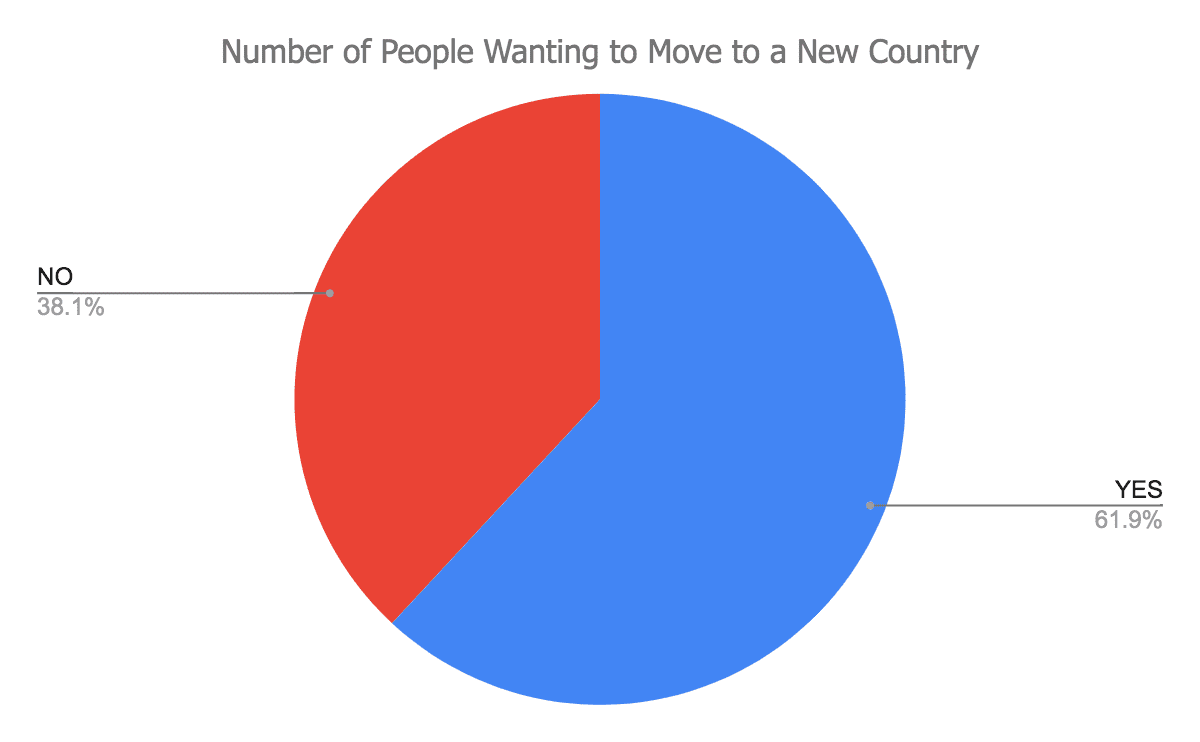 Out of 62% of the total survey takers,
Out of 62% of the total survey takers,
- 58% would like to live in a major city outside of the US
- 42% plan to move to a small town or village. Out of this, 41% are considering living in the woods or close to nature.
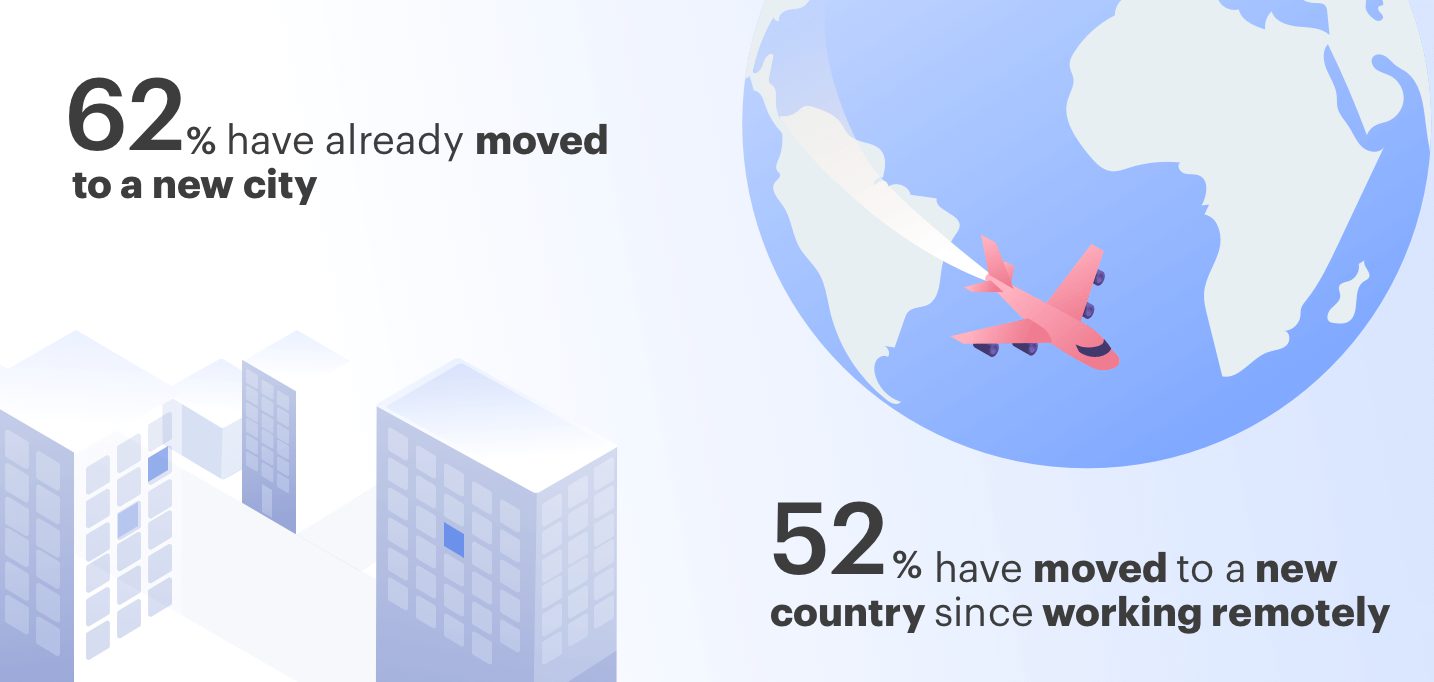
On the other hand, among the 38% of remote workers who don’t want to leave the country, 66% plan to move to a new city in the USA. In fact, 62% from this share have already relocated.
2. Work-From-Home Policy Adoption
To derive at the work-from-home policy adoption rate, we divided the respondents into four age groups, and this was what we found:
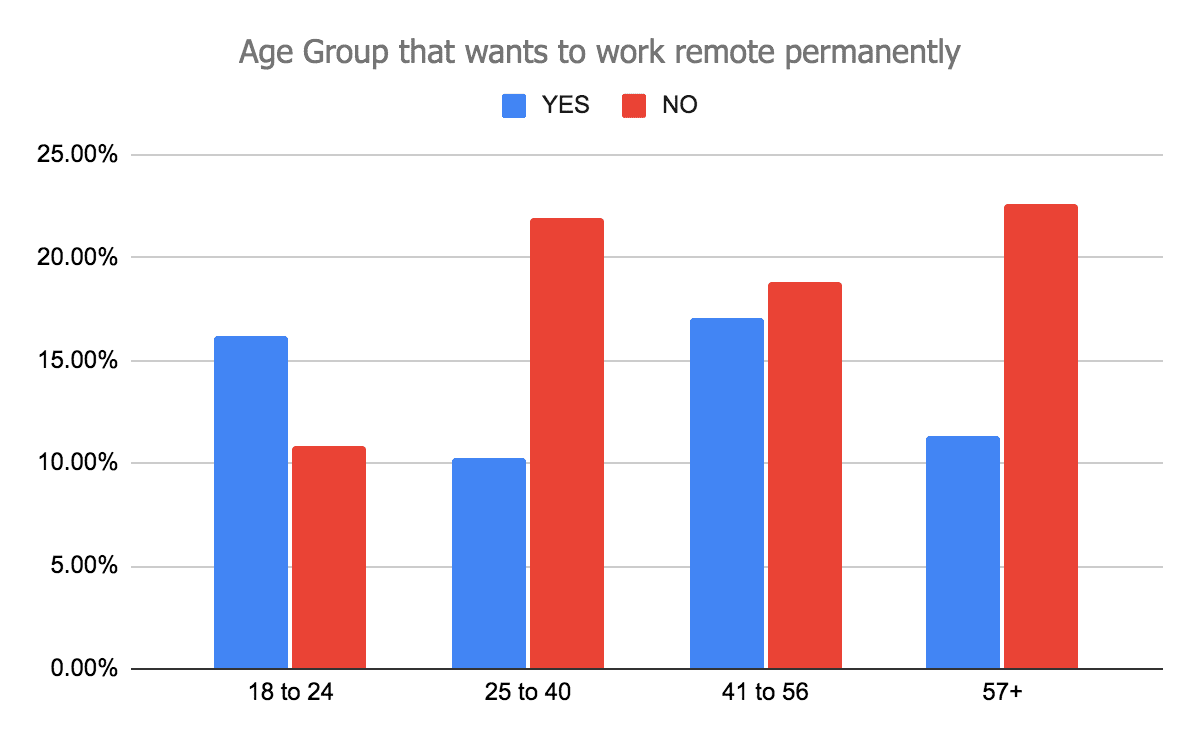 The age group 18 to 24 (16%) and 41 to 56 (17%) are the higher adopters of work-from-home, while the age group 25 to 40 (10%) and 57+ (11%) are the least adopters of work-from-home policy.
The age group 18 to 24 (16%) and 41 to 56 (17%) are the higher adopters of work-from-home, while the age group 25 to 40 (10%) and 57+ (11%) are the least adopters of work-from-home policy.
OnePoll, on behalf of Simform, also found that 82% of the employers are proposing an indefinite/permanent work-from-home option. In comparison, 77% of the employers are eager to give this option permanently.
Recently, Spotify adopted the “Work from Anywhere” model that allowed employees to choose between physical office, work from home, and a flexible, hybrid set-up. The company also encouraged flexibility as a part of its dynamic workplace effort so that employees could choose their preferred location for work.
#3. How Employees are Benefiting from Remote Work?
Out of the 2005 people surveyed, 70% felt that remote working style enabled them to travel and live as per their comfort.
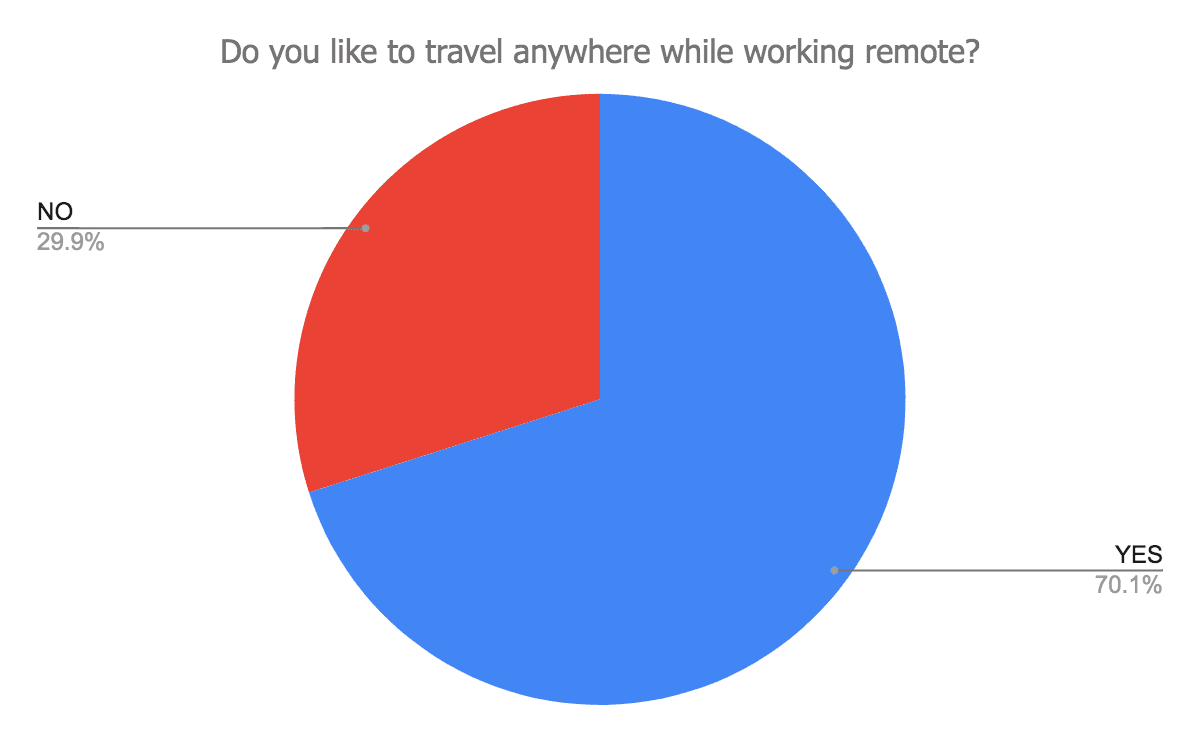 In addition to that, people highlighted various other benefits of working remotely:
In addition to that, people highlighted various other benefits of working remotely:
- 66% – Flexible working hours
- 49% – Sleeping in later/going to bed later
- 47% – Flexibility on where I can work from
- 43% – Not having to commute
While 2/3rd of the respondents felt that flexible working hours are the most significant benefit of working remotely, nearly half of them considered sleeping late and flexibility of working from any place as incentives in our work from home survey.
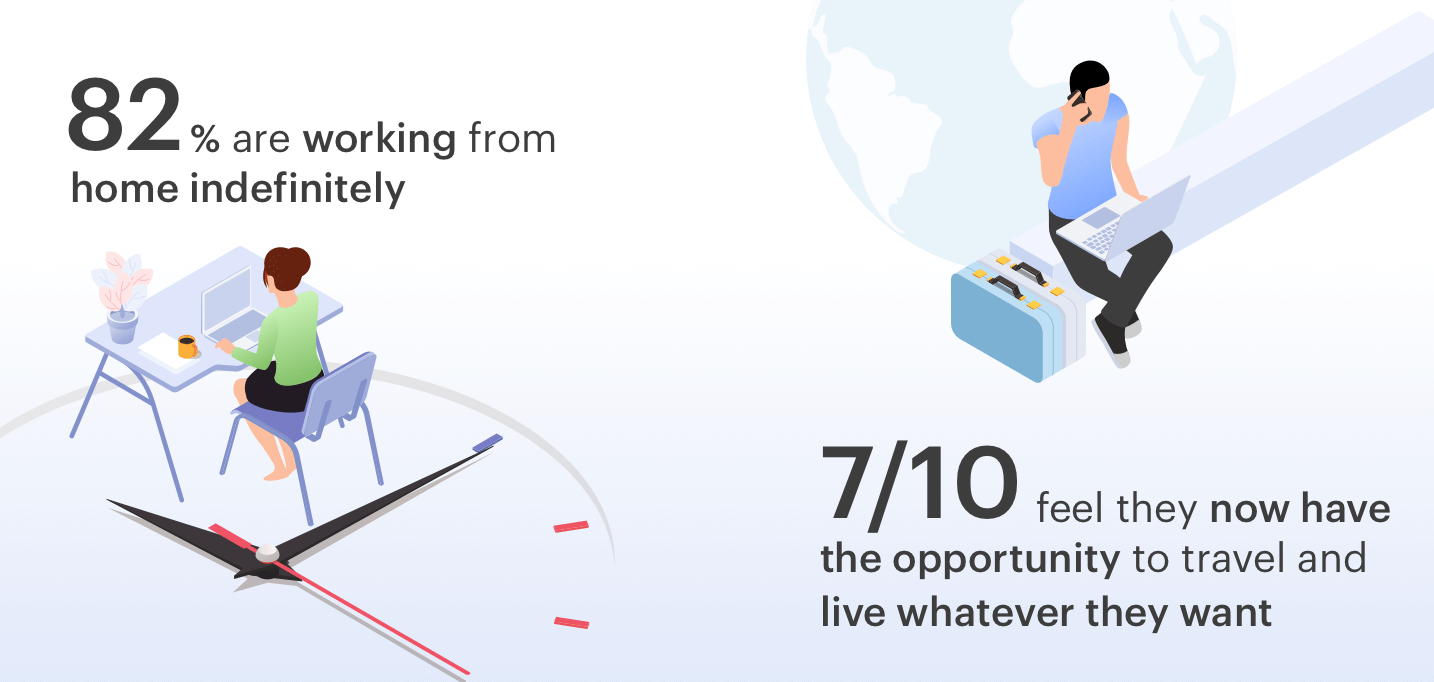
4 of every 10 survey takers also highlighted that not having to commute every day added to their ease of living.
From the above remote work statistics, we clearly say that employees are benefited a lot from remote work.
#4. Status of Their Current Job
Let’s face it. The COVID-19 pandemic has affected many livelihoods, and many people have lost their jobs or have seen a pay cut.
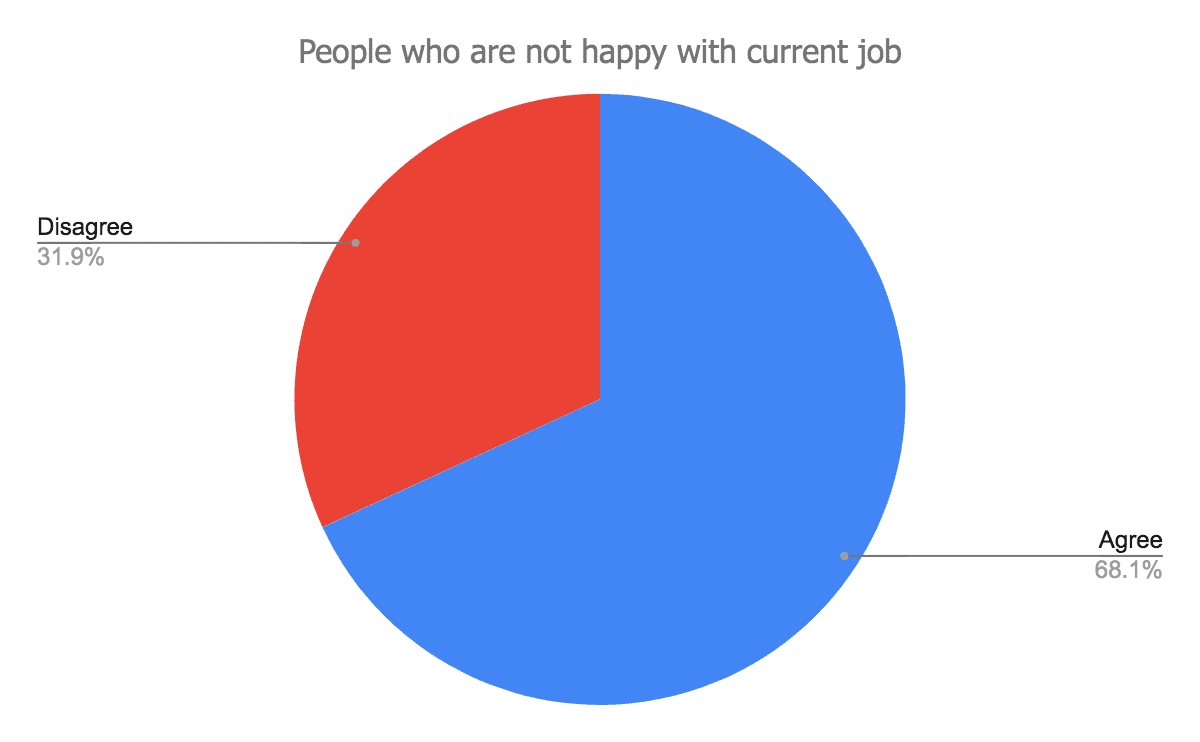 We found out that 68% of the people were not happy with their current job. And out of these, 57% are hunting for new opportunities four times a week. As a matter of fact, 66% of these job seekers are applying for a new job through their current employer’s computer.
We found out that 68% of the people were not happy with their current job. And out of these, 57% are hunting for new opportunities four times a week. As a matter of fact, 66% of these job seekers are applying for a new job through their current employer’s computer.
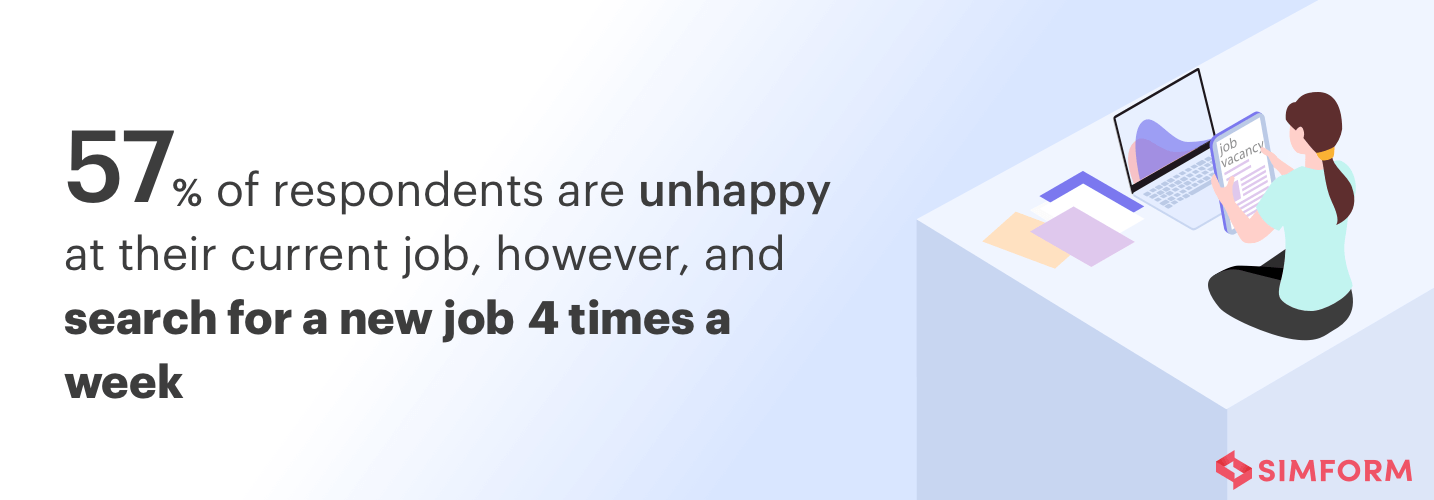
Out of the ten respondents, six are hunting jobs to expand their skills while the others are thinking about moving to a new vertical.
Although 68% of the respondents reported not being happy with their current workplace, they are still willing to stay at their current workplace. This was because of the uncertainty of the job market in the post-pandemic environment.
What’s more, we also found in our work from home survey that 32% of people who want to leave their job would accept the next offer only if it allowed them to permanently work remotely.
Opinion from Our VP of Marketing – Maitrik Kataria
Maitrik Kataria, VP of Marketing, Simform reported, “Conducting the remote working survey was a learning experience in itself. We got the chance to visit unexplored territories relating to the shift in workplace culture. Our findings indicated that Americans were willing to explore new career opportunities, which is quite interesting if we consider the job uncertainties the pandemic has brought into being.”
Most Important Aspects Americans Are Looking for in a New Job
- Benefits package – 50%
- Money/salary – 45%
- Job security – 42%
- Working environment – 39%
- Career development – 38%
- The job itself – 36%
- Recognition – 34%
- Relationship with colleagues – 27%
- Responsibility – 24%
- Challenge – 14%
Nearly half of Americans prioritize benefits packages over money, which indicates the changing demand of the market.
Maitrik further remarked, “People are prioritizing career development and giving importance to the work environment. I wouldn’t be completely wrong if I said the priorities of Americans have changed. Finally, I believe remote working is here to stay. The sooner organizations transition from the traditional work and hiring patterns, the easier it’ll be for them to absorb talent from across the globe.”
Conclusion
Today, businesses have become more competitive than ever, and it’s all about more productivity and less cost. Remote working gives your business the opportunity to build a geographically distributed team without actually having to set up a physical offices. This way, you can hire the cream of crop within your budget. Simform can help your organization extend its tech capabilities and work as your dedicated tech partners. Let’s have a chat to know how!
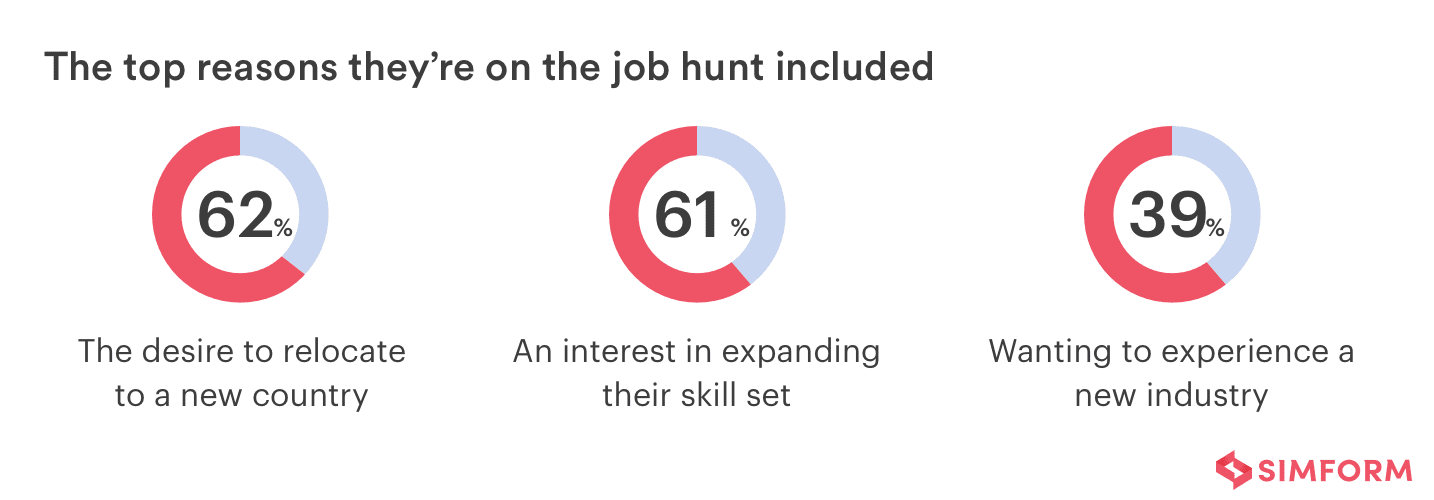
YOGESH SURATI
Excellent written & thinkable of remote working is a future